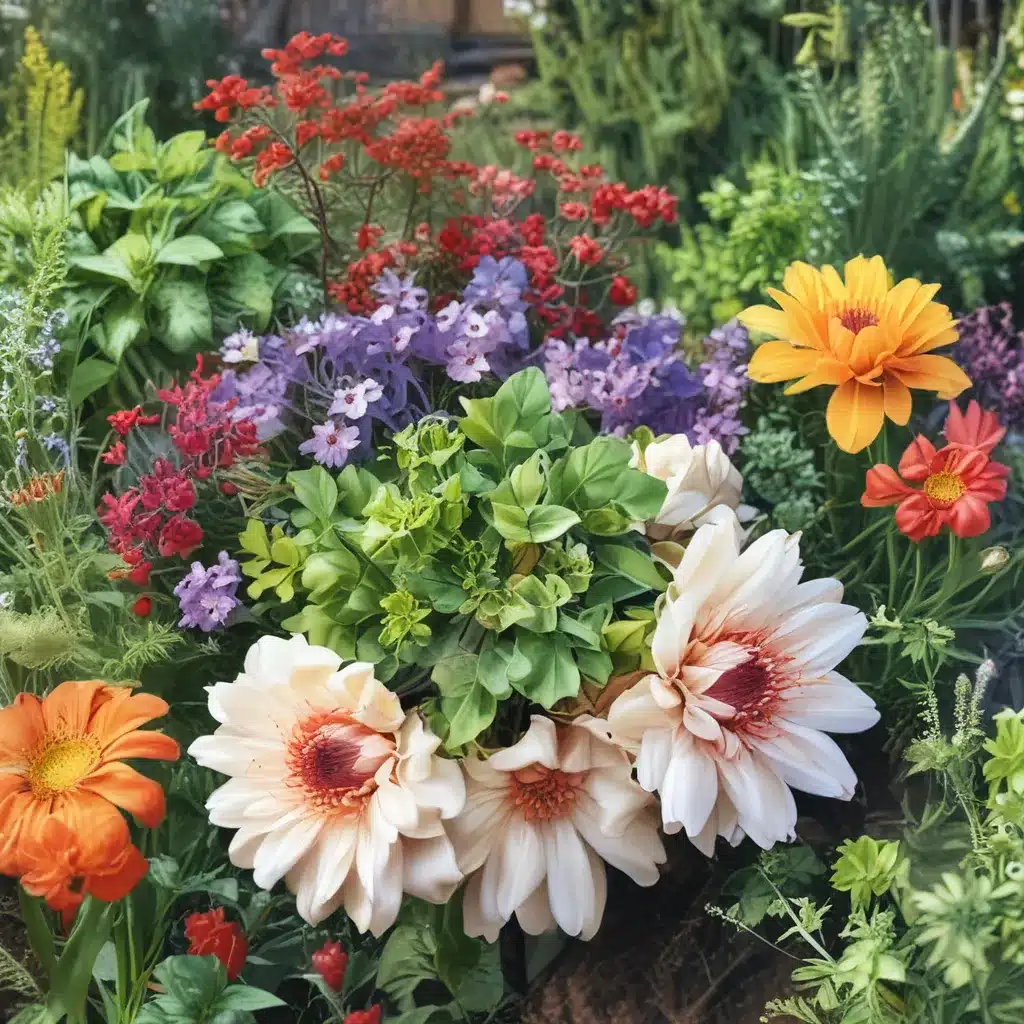
The Beauty and Brilliance of Companion Planting
As I stroll through my bustling vegetable garden, I can’t help but marvel at the intricate dance of life unfolding before me. The vibrant blooms of zinnias sway in the gentle breeze, their bright petals beckoning a horde of pollinators to feast on their nectar. Nearby, the delicate umbels of dill draw in a swarm of ladybugs, nature’s voracious aphid hunters. It’s a symphony of symbiosis, where every plant plays a vital role in creating a thriving, balanced ecosystem.
This is the power of companion planting, a practice that has captured my imagination and keeps me exploring the wonders of the natural world. By cultivating a diverse array of plants, each with their unique qualities, I’ve discovered that I can harness the inherent synergies of the garden to boost the health and productivity of my Thornapple CSA crops.
Unlocking the Secrets of Beneficial Insects
As I delve deeper into the intricate web of plant-insect relationships, I’m continuously amazed by the sheer brilliance of nature’s design. Take the humble marigold, for instance. These vibrant flowers don’t just add a pop of color to my garden; they also produce a substance called alpha-terthienyl, which can ward off pesky nematodes and cabbage worms. By strategically placing marigolds around my vegetable beds, I’m creating a natural defense system that keeps my precious crops safe from harm.
But the magic doesn’t stop there. Zinnias, with their striking hues and alluring nectar, have the power to attract beneficial insects like predatory wasps and hoverflies. These voracious predators feast on the very pests that would otherwise ravage my tomatoes, cucumbers, and potatoes. It’s as if the zinnias are serving as a beacon, drawing in nature’s army of organic pest control experts.
The Captivating Allure of Pollinator-Friendly Plants
Of course, no discussion of companion planting would be complete without highlighting the importance of pollinators. As I stroll through the Forks in the Dirt blog, I’m reminded of the vital role these tiny creatures play in the health of our ecosystems. By incorporating pollinator-friendly plants like milkweed, bee balm, and agastache into my garden, I’m not only creating a haven for butterflies and bees, but I’m also ensuring the successful pollination of my vegetable crops.
The synchronization between these native plants and the pollinators they support is truly awe-inspiring. As the Forks in the Dirt blog notes, the bloom time of the meadow blazing star aligns perfectly with the peak of monarch butterfly migration, a testament to the deep interdependence that has evolved over centuries. By welcoming these pollinators into my garden, I’m not only supporting their survival, but I’m also ensuring the bountiful harvests that my CSA members have come to expect.
The Unexpected Gifts of Comfrey and Calendula
As I continue to explore the world of companion planting, I’m delighted by the unexpected gifts that certain plants have to offer. Take comfrey, for example. This unassuming perennial may not be the showiest flower in the garden, but its secret superpower lies in its ability to jumpstart the composting process. By adding comfrey leaves to my compost pile, I’m harnessing the natural chemical compounds within the plant to accelerate the breakdown of organic matter, creating a nutrient-rich soil amendment for my veggies.
And then there’s calendula, the sunny flower that has captured my heart. Not only does it attract a host of beneficial insects like ladybugs and lacewings, but it also possesses remarkable medicinal properties. I’ve discovered that the vibrant petals of this “pot marigold” can be transformed into a soothing salve, perfect for treating minor cuts and scrapes in the garden. It’s a true multi-tasker, bringing beauty, pest control, and herbal healing all in one captivating package.
The Ephemeral Magic of Gardening
As I continue to experiment with different companion planting strategies, I’m constantly reminded that the art of gardening is as much about flexibility as it is about planning. What works for one gardener may not necessarily work for another, and that’s the beauty of it. The living, breathing medium that we call soil is ever-changing, and each plot of land has its own unique quirks and challenges.
That’s why I approach companion planting with a light touch, always ready to adapt and learn from my experiences. I may have my personal favorites, like the bold and vibrant zinnias or the soothing calendula, but I’m open to exploring new possibilities and discovering unexpected synergies. After all, the true magic of gardening lies in the ever-evolving dance between us and the natural world, a symphony of growth, resilience, and symbiosis.
So, as I continue to cultivate my bountiful Thornapple CSA garden, I’m excited to see what new revelations the world of companion planting has in store. With each season, I’m confident that I’ll uncover new ways to work in harmony with nature, unlocking the power of symbiotic growth and creating a lush, thriving oasis that nourishes both my plants and my soul.



